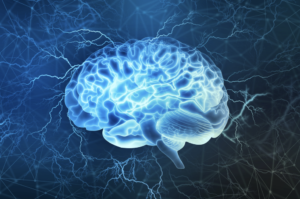ADHD and Blood Sugar
Q & A with Our Clinic ADHD Specialist Dr. Meghan Van Vleet
Q: Why is blood sugar stability an issue with people with ADHD?
ADHD is a cognitive health condition where dopamine, a neurotransmitter in the brain, is dysregulated. Dopamine is the precursor to norepinephrine and epinephrine (adrenaline). Adrenaline signals our body when blood sugar levels are low. Because people with ADHD have a dopamine dysregulation they also commonly have blood sugar dysregulation. I often see low blood sugar in my ADHD population.
Q: What are the effects of low blood sugar?
People with ADHD often don’t notice when their blood sugar is dropping. By the time people experience symptoms their blood sugar is very low. Symptoms of low blood sugar are fatigue, brain fog, irritability, shakiness, loss of focus, “feeling hangry”. I also see rage in people with low blood sugar. Behavioral issues in some kids are actually due to low blood sugar.
Q: What are the physiologic effects of low blood sugar in the body?
People with low blood sugar will tend to reach for a food that is a simple carbohydrate such as cookies, chips, crackers, juice, bars, or other baked goods. With kids it could be candy, goldfish, granola bars, muffins. When we eat sugar or a simple carbohydrate snack, then the blood sugar spikes for a short period of time and then plummets. Blood sugar spikes and drops can effect behavior, mood and cognitive abilities at all ages.
Q: What are your recommendations for kids with low blood sugar?
Always pair your snacks with protein. Some kids with ADHD don’t have an appetite for protein. The reason for that may be because they are deficient in zinc. Zinc is involved in appetite and digestion as well as other processes in the body. I evaluate my patients for zinc deficiency if they don’t eat a lot of protein. Correcting the zinc deficiency can improve a person’s appetite for protein and it will improve their blood sugar stabilization.
Q: What are your favorite protein snacks and meals?
My favorite protein choices for grab and go snacks are hard boiled eggs, any jerky, nuts and seeds or nut butter with apples, shredded meat or deli slices, cheese, hummus and carrot sticks or rice crackers. Pair your protein with a piece of fruit. The most beneficial protein snack is the one your kid will eat.
Breakfast ideas: A breakfast burrito with eggs, cheese, sausage, veggies wrapped in a tortilla. A couple sausage links and some fruit or blueberries.
Dinner ideas: Roasted chicken with cooked broccoli or green beans and a side salad. Chicken sausage with asparagus and side salad. Salmon fillet with romaine salad with cherry tomatoes, carrots, cucumbers. Tacos with beef and cheese in a shell or in a salad bowl with salsa, avocado, cilantro. Add whatever starch your family likes as you wish.
Q: Are these suggestions appropriate or the whole family?
Yes. ADHD runs in families. If a child has ADHD it is likely that one or both of the parents have ADHD. These dietary modifications are beneficial for the whole family. There is a link between ADHD and the progression towards cognitive decline and dementia. We know that dementia is predominantly due to metabolic issues such as blood sugar instability. Everyone in the family should be balancing their snacks and meals in order to stabilize their blood sugar.




